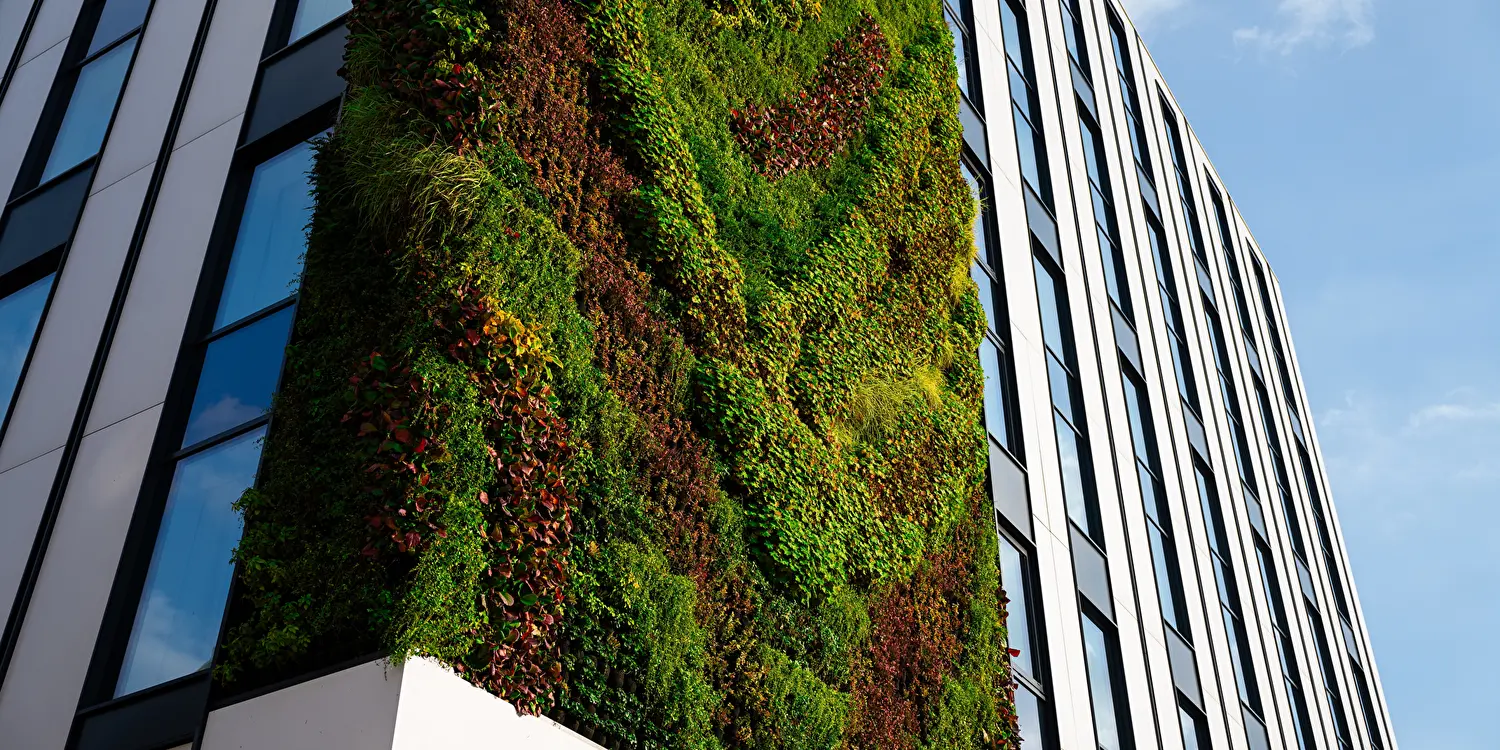Sustainability
Shaping a Sustainable Future

The topic of sustainability is firmly anchored at blue real estate advisors and is implemented at all corporate levels. With clear guidelines that comply with ESG criteria (environmental, social and governance), we pursue the goal of making a positive contribution to the development of sustainable living spaces.
blue real estate advisors strives to significantly reduce the CO2 emissions of the properties it manages in close cooperation with the owners and tenants within an economically viable framework in order to actively contribute to shaping a sustainable future.
Sustainability - an integral part of our corporate strategy
We actively drive the sustainable transformation of the real estate sector by developing future-ready, low-emission assets that harmonize ecological responsibility, social impact, and economic success. Our properties set benchmarks for responsible asset management across the DACH region. In doing so, we adopt a pragmatic approach aligned with the financial objectives of our clients.
As an experienced asset manager, we systematically integrate ESG criteria into our investment and asset management processes. Our approach is guided by internationally recognized sustainability standards, including the Greenhouse Gas Protocol, the EU Taxonomy, the Sustainable Finance Disclosure Regulation (SFDR), the Global Real Estate Sustainability Benchmark (GRESB), and the German Sustainability Code (DNK).
Our goal is the measurable reduction of greenhouse gas emissions (Scopes 1-3) and the ecological transformation of our portfolios through a data-driven, evidence-based approach. We continuously foster the development of our employees' competencies and enhance the social impact of our actions.
Through transparent governance structures and active dialogue with our stakeholders, we create long-term value for both the environment and society. For us, sustainability is not merely a guiding principle - it is a lived reality.
Sustainability and Profitability - a Contradiction?
Not a contradiction. But it is undoubtedly a major challenge to reconcile sustainability and profitability in the real estate sector. We face this challenge together with our clients and tenants.
Your contact person
1. Energy-Efficient Construction:
- Use of sustainable building materials (e.g. recyclable or CO2-neutral materials).
- Improved insulation and construction to reduce energy consumption.
- The aim is to reduce operating costs in the long term.
2. Renewable Energies:
- Integration of solar panels, geothermal or wind power to generate energy.
3. Smart Building Technologies:
- Use of intelligent building management systems to monitor and optimize energy consumption.
4. Sustainable Asset Management:
- When operating real estate, the introduction of CO2-neutral or low CO2 operating processes can increase the value of a property.
- ESG-compliant properties often achieve higher rents and are more attractive to investors.
5. Certifications and Standards:
- Sustainability certificates such as LEED (Leadership in Energy and Environmental Design) or DGNB (German Sustainable Building Council) increase the attractiveness and market value of real estate.
- Participation in GRESB (Global Real Estate Sustainability Benchmark) as a strategic step to strengthen the sustainability and profitability of a real estate portfolio.
- Targeted support and coordination in the implementation of the EU taxonomy with the aim of benefiting both ecologically and financially from the new requirements. o Supporting and steering the Net-Zero Asset Owner Alliance (NZAOA) with the aim of aligning investment portfolios towards net zero emissions by 2050.
- Use of the CReeM pathway calculation (Carbon Risk Real Estate Monitor) to monitor the development of CO2 reduction.
6. Subsidies and Grants:
- Use of funding programs for sustainable construction projects, energy-efficient renovations, photovoltaic systems, etc., which support the economic viability of CO2 reduction measures


Our ESG Initiatives in Munich
Sustainable Housing with Social Responsibility
Our dedication to ESG principles, particularly the social dimension ("our 'S' in ESG"), has long been integral to our approach in real estate. This is exemplified by our collaborative projects with the City of Munich in the districts of Großhadern and Riem, which highlight our commitment to responsible housing solutions and sustainable urban development.
Munich Großhadern: Creating Sustainable Housing for Vulnerable Tenants
In Munich Großhadern, we addressed Munich’s housing crisis by developing a residential complex for individuals and families who, despite being financially capable of paying rent, were forced into emergency shelters due to the city’s unaffordable market. Through strategic urban densification, we minimized land use, sealing only 20% of the plot, while providing 12 families with a permanent, sustainable, and appealing living environment. The project’s success is reflected in its exceptional stability, with an annual tenant turnover rate below 2%.
Munich Riem: Affordable Housing with a Focus on Quality of Life
In Munich Riem, our team constructed over 400 income-subsidized apartments for low-income households under the city’s "Income-Based Funding Program." Prioritizing resident well-being, the implementation of sustainable design practices and carefully selected eco-friendly materials was a priority. Complementary social neighbourhood management initiatives foster tenant satisfaction and community cohesion. Additionally, the integration of mobility solutions, such as enhanced public transit access, reduced reliance on private vehicles, thereby aligning with broader environmental goals.
True long-term residential quality arises from the seamless integration of the elements affordability, sustainability, and community-focused infrastructure and their continuous evolution. Our projects in Großhadern and Riem stand as testaments to this philosophy, proving that socially responsible real estate can harmonize human needs with environmental stewardship.

